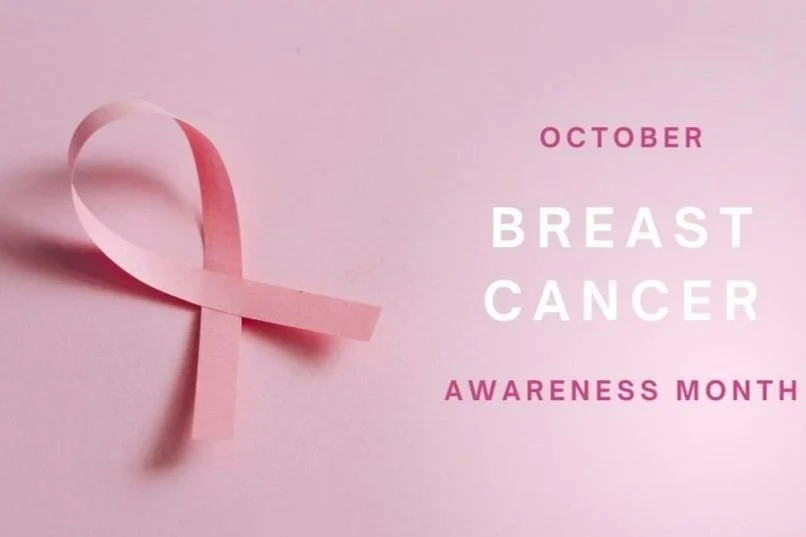Breast Cancer Awareness Month
As October is Breast Cancer Awareness Month, Winserve Care proudly stands alongside countless individuals and organisations worldwide in the mission to raise awareness about breast cancer. Through our years of providing care and support, we have witnessed the bravery and strength of those facing this disease, and the profound effects it can have on families. In this endeavour, we emphasise the importance of early detection, regular check-ups, and knowing how to identify changes yourself. Use the drop downs below to find out key information on how to protect yourself and your loved ones against breast cancer.
-
Breast cancer occurs when cells in the breast tissue begin to grow uncontrollably. Breast cancer can spread through the blood vessels and lymph vessels, and when this spreads to other parts of the body, it is said to have metastasised. Early detection of breast cancer is vital for successful treatment.
Breast Cancer is often divided into:
• Non-invasive breast cancer – The cancer has not spread into the breast tissue or surrounding ducts - This is usually detected during a mammogram and rarely shows lumps.
• Invasive breast cancer – Where the cancer cells have spread through the lining of the ducts into the surrounding breast tissue. This is the most common type of breast cancer.
Causes of breast cancer are not fully understood, however, there are risk factors that can affect the likelihood of development, including:
• Age (most common in women over 50)
• Family history (Genetics)
• Hormone medicine (HRT, contraception)
• Lifestyle (alcohol, obesity)
-
MYTH: A lump is the only sign of breast cancer.
FACT: There are many different symptoms that can be a sign of breast cancer, including:
- A new area of thickened tissue in your breast
- A change in the size or shape of one or both breasts
- A change in how your nipple looks, such as becoming sunken
- A lump or swelling in either armpit - A rash, crusting, scaly or itchy skin or redness on or around your nipple
- Puckering or dimpling on the skin of your breast
- Discharge of fluid from either nipple
MYTH: Only women can get breast cancer.
FACT: Breast cancer can affect both men and women, although it is less common in men. This form of cancer impacts the breast tissues, which are present in both sexes.
MYTH: Breast cancer always runs in the family.
FACT: While a family history of breast cancer can increase your risk, the majority of breast cancer cases occur when there is no family history of the disease. Therefore, if your family has no history of breast cancer, do not assume that you are at a lower risk – breast cancer can affect anyone.
MYTH: All lumps in the breast are a sign of breast cancer.
FACT: Not all lumps are cancerous, and the majority of new breast lumps are benign.
MYTH: I’m too young to develop breast cancer.
FACT: While less common in younger women, breast cancer can affect them as well, with around 10,000 women under 50 being diagnosed with breast cancer each year in the UK.
MYTH: Breast cancer treatment means I will lose my breasts.
FACT: Treatments can differ from surgery, chemotherapy, and radiotherapy. Surgery may only involve removing a small lump and does not always involve a mastectomy (complete removal of the breast).
MYTH: Diagnosis is a death sentence
FACT: Breast cancer can be a life-threatening condition when left untreated, but survival rates for breast cancer are significantly higher with early detection. Early diagnosis significantly improves the chances of successful treatment and recovery.
-
The cause of breast cancer remains a mystery, making it challenging to pinpoint how to prevent it. What we do know is that everyone’s breasts are unique, and they can change throughout the month, particularly during menstrual cycles and during/after menopause. The NHS Breast Screening Programme has developed a 5-point plan for being breast aware:
1. Know what’s normal for you – Begin by understanding what’s usual for your breasts. Make it a habit to conduct monthly self-exams. This routine will familiarise you on your usual breast size, shape, and texture and will help you spot anything unusual in the future. (Refer to image in ‘How To Self-Examine’ as a guide on how to check yourself).
2. Look at your breasts and feel them – Use both visual and tactile examinations for early detection. Stand in front of a mirror and check your breasts from various angles (arms up, by your side, and on your hips.) Additionally, you can check whilst lying down to examine existing areas.
3. Know what changes to look for – It is crucial to be aware of potential changes. Keep an eye out for any abnormalities, although most changes may not be cancer related. (Refer to Myths VS Facts to understand what symptoms to look out for.)
4. Report any changes to a GP without delay – If you notice anything out of the ordinary, don’t hesitate to contact your GP. Timely reporting is essential, and your GP can perform the necessary checks and provide you with guidance.
5. If you are over 50, attend routine screenings – Mammogram screenings are highly recommended if you are over the age of 50. These can detect cancer that might be too mall to feel or see. You’ll receive invitations every 3 years if you’re registered with a GP.
-
You can use the image below or NHS guidance in the Resources section for guidance on how to check your breasts.
Using your left hand, move the pads of your 3 middle fingers around your right breast, covering the entire breast area and armpit. Use light, medium, and firm pressure to feel for any new lumps, thickenings, hardened knots, or any other breast changes. Also squeeze the nipple to check for discharge.

-
Breast Cancer Awareness Month goes beyond awareness; it’s a call to action. Here is how you can be actively involved:
• Donate – You can make a meaningful impact by contributing to respected research and awareness organisations like Cancer Research UK, Coppafeel, Breast Cancer Now, Pink Ribbon Foundation and Macmillan Cancer Research (Find donation links below)
• Volunteer – Get hands-on and volunteer with charity organisations and events dedicated to breast cancer fundraising. For instance, Breast Cancer Now invites everyone to “Wear Pink” on 20th October to promote breast self-checks. You could also consider organising/participating in a Macmillan coffee morning, where stories of breast cancer journeys can be shared amongst others with similar experiences.
• Spread the Word – Use your voice and share information about breast cancer prevention and early detection. Whether on social media, amongst co-workers, with friends, or within your family, your advocacy can make a significant different.
-
-
Over the years, we’ve witnessed the resilience of individuals facing breast cancer and our commitment to supporting those affected by breast cancer and their loved ones extends beyond October.
This month serves as a poignant reminder of the importance of early detections and knowing how to check yourself.


